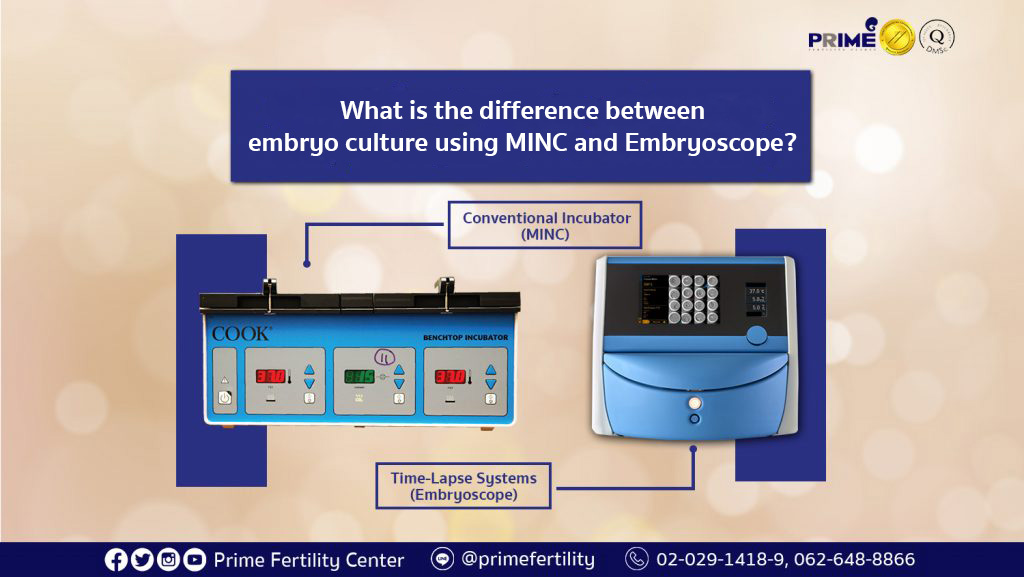At present, the laboratory of Prime Fertility Clinic is using the Conventional Standard Incubator system. The Benchtop incubators (MINC) imitate natural condition of an embryo in the uterine cavity.
The Time-Lapse incubator is similar to the culture method of the Time-Lapse System or Embryoscope but slightly different in mechanism. Providing that MINC has a water system to maintain humidity and Time-Lapse is using gas directly.
Most studies found that Time-Lapse Systems resulted in a slight increase in blastocyst embryos from the standard method. But the pregnancy rate and live birth rate were not significantly different in terms of statistics. However, the advantage of culturing in Time-Lapse Systems is that the embryo development can be monitored in real-time, and there is a minor disturbance to the embryos in case of using an unchanged solution during the embryo culture. But this aspect is considered a disadvantage. Because the embryo is cultured in the solution and growing, the cell function often produces ammonium-free substances, affecting the embryo development. The Conventional Incubator has an advantage. The embryos will be received a new solution. The changing of solution makes the freshness. And it is convenient to perform laser-assisted hatching (AH) to help increase the pregnancy rate.
In addition, several studies have shown that there is no difference in getting blastocyst embryos comparing between culturing in conventional standard incubator and time-lapse incubator. When considering the overall pregnancy and delivery rate, the patients may also need to pay for an additional equipment charge for the Time-Lapse incubator.
If considering the results of studies referred to the embryo culture using time-lapse systems, a very small number of embryos were analyzed compared with the number of embryos studied from conventional culture machines. As a result, the reliability of the success rate obtained is reduced. Much more statistical data is still needed to compare the success of in vitro embryo culture from both systems.
Reference:
https://www.ncbi.nlm.nih.gov/…/10815_2017_Article_1100.pdf
https://academic.oup.com/humrep/article/30/2/268/727288
–
Reference: Prime Fertility Center Co., Ltd.

